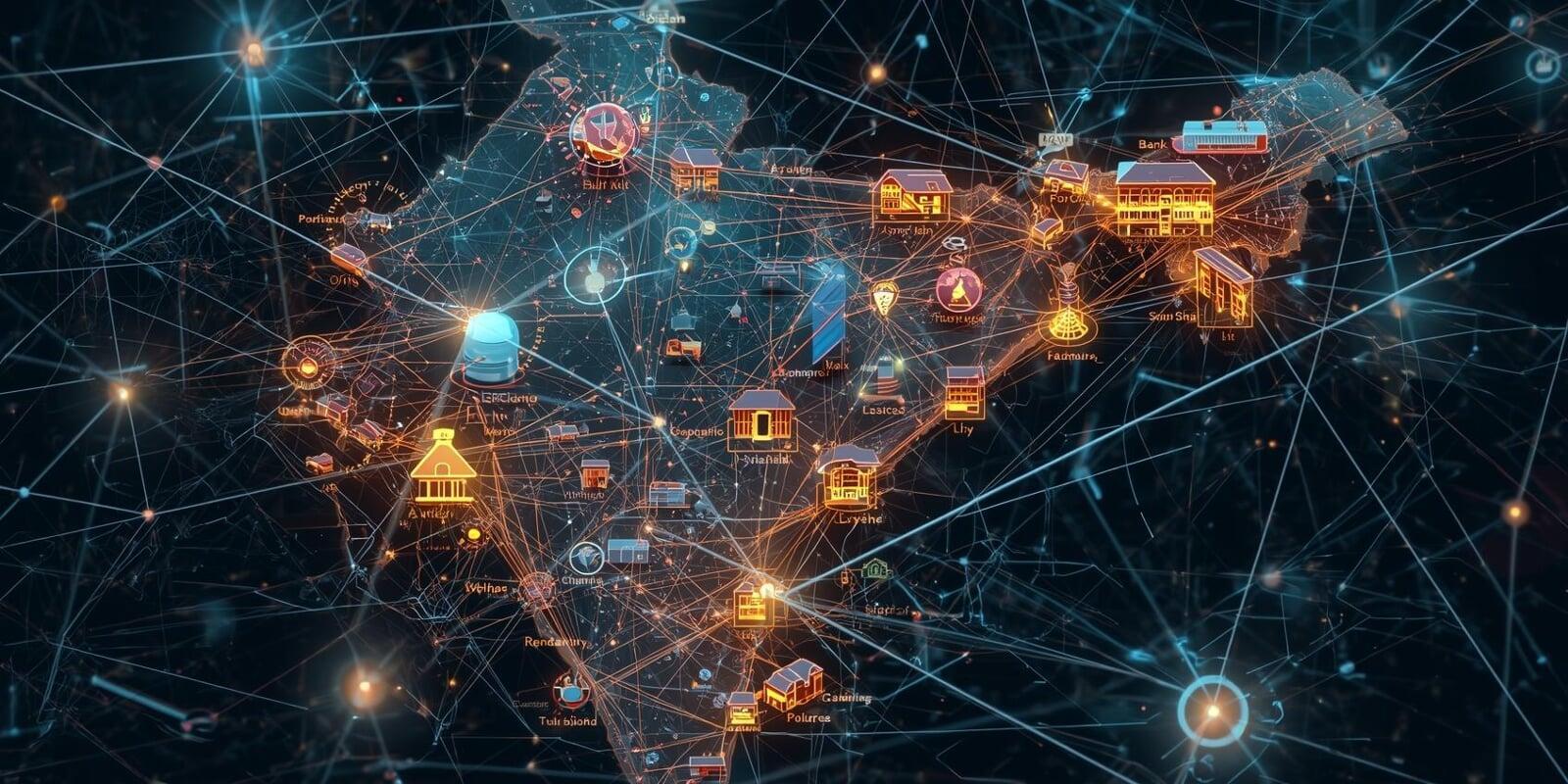Introduction — A Story From the Inside

A few months ago, during a late Friday evening review, our team received a frantic call from a client. Their operations had come to a standstill — systems frozen, files encrypted, employees locked out. A ransomware attack had unfolded quietly behind the scenes for weeks. By the time they noticed, the attackers had already mapped their entire network.
Even before we reached their office, the question rang in our heads:
“How many Indian organisations are one missed patch, one unaware employee, or one misconfigured server away from the same fate?”
Unfortunately, the answer is: far too many.
This moment became a reminder of a truth that we, as digital-first professionals in India, must acknowledge:
Cybersecurity, compliance, and risk management are no longer separate disciplines — they are one shared responsibility.And cyber awareness is the human firewall holding it all together.
1. India’s Digital Rise — and the Security Shadow Behind It

India is experiencing one of the fastest digital expansions in the world. Everything — banks, schools, healthcare, logistics, governance — is moving online.
But with this growth comes a darker counterpart:
Cyber fraud cases in India rose four-fold in FY2024, leading to losses of nearly $20 million.
(Source: Reuters)Indian schools alone face 8,000+ cyberattacks every week.
(Source: Times of India)The RBI recently issued directives asking lenders to tighten cybersecurity oversight, acknowledging rising systemic risks.
(Source: Reuters)
This is not a statistic anymore — it’s a pattern.
As we integrate technology into every operational layer, our exposure expands in equal measure.Our vulnerabilities grow.
Our risks deepen.
And our responsibilities multiply.
2. Why Cybersecurity Is Not Just an IT Issue — It’s a Business Imperative
Cybersecurity used to be a department. Today, it is a leadership function, a boardroom subject, and a customer-trust currency.
Why?
Because a breach doesn’t just compromise systems — it compromises:
Revenue
Reputation
Compliance posture
Customer trust
Partnerships
Long-term business value
A single misstep can undo years of brand building.
Cybersecurity is now the backbone of digital business continuity. If it fails, the entire organisation feels the shock.3. Compliance & Risk Management — The Architecture Behind Cyber Defence
Compliance and risk management are often misunderstood as paperwork exercises.
In reality, they form the architecture that keeps organisations standing.
In India, compliance is intensifying:
The Digital Personal Data Protection Act (DPDPA) has introduced strict controls on data collection and processing.
Sectors like finance, healthcare, education, and telecom face tightened sectoral cybersecurity norms.
The RBI, SEBI, IRDAI, and MeitY have raised expectations for audits, reporting, encryption, and breach notification.
Compliance is not optional — it is the legal definition of “minimum protection.”
Risk management is how we go beyond that minimum.
Where compliance asks,
“What must we do?”
Risk management asks,
“What will protect us best?”
4. The Visibility Problem — We Cannot Protect What We Cannot See

One of the most dangerous gaps in Indian organisations today is the lack of accurate visibility.
Studies show that:
84% of Indian enterprises do not have full visibility into their cyber exposures.
That means:
Systems unknown to IT
Shadow SaaS tools
Forgotten servers
Weak passwords
Misconfigured cloud workloads
Outdated access rights
Rogue admin privileges
Every invisible asset becomes an entry point for an attacker.
Visibility is the foundation of both risk management and compliance — without it, we cannot measure, prioritise, or secure.5. Cyber Awareness — The Human Firewall We Keep Underestimating
Technology can detect threats.
Tools can block attacks.
Automation can accelerate response.
But none of it can stop an employee from:
Clicking a malicious link
Sharing credentials
Falling for a phishing call
Uploading sensitive data to a public folder
A staggering 64% of Indian organisations report that employees lack basic security awareness.
That number should worry us.
Because cyber attackers no longer “break in” —
they log in with stolen credentials.
Awareness transforms employees from vulnerabilities into sentinels.
This is not training — it is behavioural transformation.6. Building a Risk-Aware Cyber Culture in Indian Organisations

If we want real cyber resilience, culture is non-negotiable.
A risk-aware culture includes:
✔ Role-based security training
The finance team faces different risks than the marketing team.
HR faces different risks than DevOps.
Specialised training builds stronger defence.
✔ Gamified learning
Simulations, competitions, quizzes — they make security memorable.
✔ Phishing drills
When employees learn through experience, behaviours change faster.
✔ “See Something, Report Something” culture
Employees must feel encouraged — not afraid — to report suspicious activity.
A culture of cyber awareness turns every individual into a proactive defender.7. Technological Acceleration — AI, Automation, and Continuous Monitoring
In the modern landscape, attackers have become faster, smarter, and more automated.
Our defences must evolve accordingly.
AI-driven threat detection
Identifies anomalies before they escalate.
Automation
Cuts down incident response time dramatically.
Threat exposure management (TEM)
Continuously identifies, ranks, and remediates exposures.
Unified risk dashboards
Help leadership understand real-time risk posture.
Organisations in India using AI and automation have reduced breach costs by up to INR 13 crore, and shortened detection/response by over 100 days.
Technology isn’t an enhancement — it’s a multiplier8. Third-Party & Supply Chain Risk — The Weakest Link Problem
More cyber incidents today originate from:
Vendors
Cloud partners
Software providers
Contractors
Agencies
We may have strong controls internally, but if our partners don’t, we inherit their weaknesses.
Third-party risk management must include:
Due diligence
Security audits
Contractual requirements
Continuous monitoring
Access governance
9. Incident Response — Because Prevention Alone Is Never Enough
A matured cybersecurity program isn’t designed on the assumption that:
“We will never be attacked.”
It is designed with:
“We will be ready when it happens.”
Effective incident response includes:
Preparation & planning
Detection & alerting
Isolation & containment
Forensic analysis
Recovery & restoration
Post-incident improvement
10. Business Continuity & Resilience — The Real End Goal
Ultimately, cybersecurity isn’t about preventing attacks —
it’s about maintaining the ability to operate through them.
Resilience ensures:
Customers continue to trust us
Operations remain functional
Data remains protected
Downtime remains minimal
Regulatory requirements remain met
11. India’s Future — A Call for Collective Cyber Responsibility
As India becomes a global digital powerhouse, we shoulder a new responsibility.
Cyber resilience cannot rely solely on:
Tools
Policies
IT teams
Audits
It requires collective accountability.
Every employee.
Every department.
Every vendor.
Every leader.
Every decision.
It is a shared promise.
Conclusion — Our Digital Future Depends on What We Do Today
Cybersecurity, compliance, risk management, and awareness are not four separate lanes.
They are one highway.
And every Indian organisation — large or emerging — is travelling on it.
The threats will grow.
Regulations will tighten.
Technologies will evolve.
But our preparedness determines whether we simply survive — or confidently lead.
Key Takeaways
India’s cyber threat landscape is intensifying rapidly.
Cybersecurity is now a business and leadership function.
Compliance is mandatory; risk management is strategic.
Visibility gaps are among the biggest vulnerabilities.
Cyber awareness transforms employees into active defenders.
AI and automation significantly reduce breach costs.
Third-party risk cannot be ignored.
Incident response and continuity planning are essential.
Culture drives resilience more than technology.
FAQs
Q: How often should Indian organisations conduct cybersecurity audits?
A: At least annually — but high-risk sectors (finance, telecom, healthcare) should conduct quarterly audits, paired with continuous monitoring tools.
Q: Is compliance enough to secure our organisation?
A: No. Compliance is the baseline. Real security requires risk-based decisions, advanced tooling, and continuous awareness programs.
Q: What is the biggest cyber risk for Indian companies today?
A: Human error — especially phishing, weak credentials, misconfiguration, and uninformed data handling.
Q: How can we make employees more cyber aware?
A: Through continuous micro-learning, phishing simulations, gamified training, role-specific modules, and a culture that rewards proactive reporting.
Q: Should small businesses in India also invest in cybersecurity?
A: Absolutely. Small and medium businesses are increasingly targeted because attackers assume they have weaker controls.

